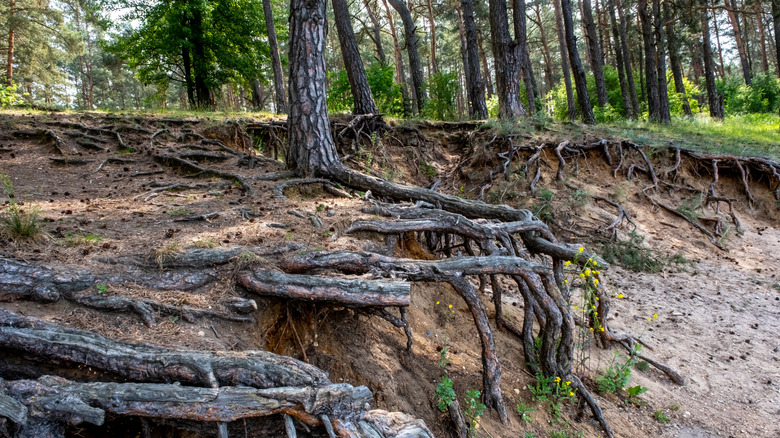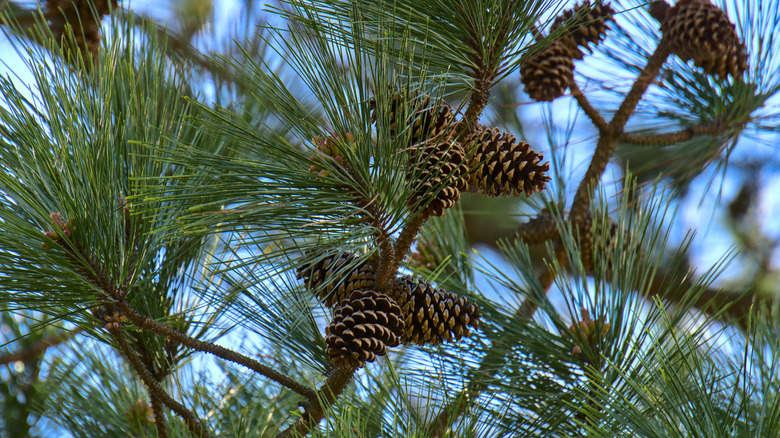Prevent Soil Erosion With A Fast-Growing Tree You Can Easily Grow In Your Yard
You probably learned about erosion in elementary school — the process of wind, water, or other forces wearing away surfaces. But did you know that too much erosion can cause soil to deteriorate and become impossible to cultivate? Additionally, when topsoil runs off into waterways, the sediment negatively impacts water quality. One way you can help prevent soil erosion is by making smart plant choices for your yard; in particular, tree roots can help stabilize soil and absorb stormwater runoff. Conifers are an excellent choice for erosion reduction because of their robust root systems and longevity. Pine trees are just one member of that group that know how to hold that soil in place.
If you live in a hilly area, pine trees can be especially beneficial, as many species naturally grow on slopes. Many are specialists in extreme environments, able to survive and thrive in desert or rainforest settings. In addition to improving the longevity of your soil, they can also improve the health of your air; all trees return oxygen to the air, but pine trees offer the added benefit of filtering out pollutants in the air, even in urban environments. If you're a backyard birder, the seeds found in pine cones — as well as the bugs that take shelter among the needles and bark — can provide food for your local birds, while the boughs can serve as safe nesting sites. As a side note, although you may have heard that it's difficult to landscape under and around pine trees, there are actually plenty of companion plants that will live happily under a pine tree.
Choosing and caring for pine trees
Although there are over 200 species in the pine family, only the 115 species in the genus Pinus are considered true pines. Most of these are native to the northern hemisphere, and there are species native to almost every U.S. state — so odds are, you'll be able to source native pines for your yard. Depending on your location and the amount of space available, some of the best pine trees to control erosion include the fast-growing Eastern white pine (Pinus strobus) or the loblolly pine (Pinus taeda), which is frequently planted as an erosion control measure. Other erosion reducing pines include long leaf pine (Pinus palustris) and Norway pine (Pinus resinosa). If space is at a premium, many dwarf cultivars are available for the Eastern white pine and others.
Specific care instructions vary depending on the species you've selected, but for the most part, pine trees prefer to be planted in areas that receive plenty of sun and have slightly acidic soil. In general, pines grow quite quickly, so you'll need to keep up with pruning if you want them to behave. In the spring, to maintain or encourage shape, you can selectively remove the "candles" — new growth at the ends of branches — by snapping them off by hand or with shears. More intensive pruning of woody branches can be undertaken in fall. Do keep in mind that the flammability of pine trees might be an issue in some areas prone to wildfires.

